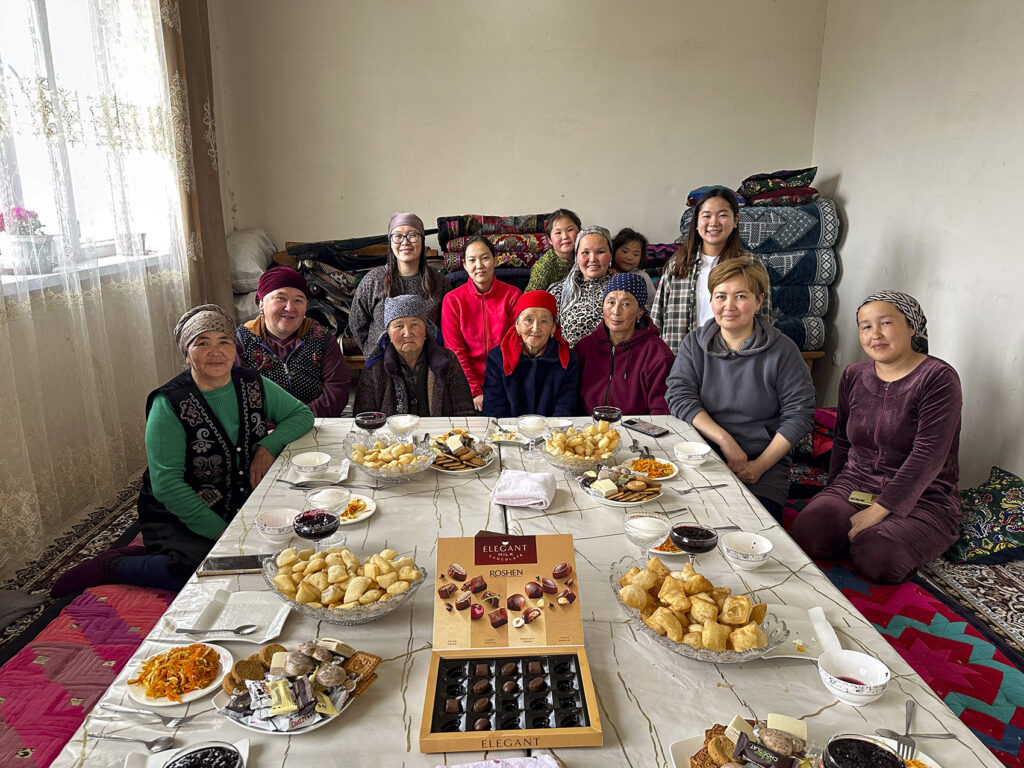The SIANI expert group Reviving the Roots works to improve soil health in Kyrgyzstan by reviving the country’s traditional and holistic approach to land and soil. As part of this work, the group has conducted a study on both historical and contemporary perceptions of agricultural soil. In this blogpost, Simone de Boer and Tatiana Stebneva from the expert group explain how this understanding can support sustainable soil management among smallholder farmers in Kyrgyzstan.
Agriculture is a central part of life in Kyrgyzstan. Around 60% of the population lives in rural areas and agriculture is the backbone of the Kyrgyz economy, employing around 40% percent of the labour force. Most of the agricultural production takes place on smallholder family farms, and many people in rural areas are partly or fully dependent on their land for their livelihoods.
Maintaining and improving soil quality and health is therefore crucial for safeguarding future subsistence needs, as well as the livelihoods and well-being of today’s smallholders. Yet, more than half of the country’s farmland is degraded due to poor agricultural practices, unsustainable irrigation methods, wind erosion and limited institutional support for smallholder farmers. Many smallholders choose unsustainable farming methods and state-subsidised mineral fertilisers since these promise short-term economic gains even if they deplete soils.
Traditionally, the Kyrgyz people’s relationship with soil and the environment in general tended to be ecocentric, but being part of the Soviet Union shifted perceptions, and this extractive approach remained the norm after Kyrgyzstan gained independence.
The study
The SIANI expert group seeks to restore the traditional reverence for soil as a living ecosystem and amplify indigenous ecological knowledge in Kyrgyzstan. To that end, the group joined forces with nine Kyrgyz students to conduct a study of historical and current local perceptions of soil and soil care. The students came from different academic fields, including anthropology, sociology, linguistics, international relations, and history.
During the spring of 2025, they conducted semi-structured interviews and focus group discussions in the regions Issyk Kul and Naryn. The aim was to understand how people manage and relate to agricultural land but also how they think and talk about soil. By engaging with smallholders, village elders, soil scientists, agronomists, legal experts, civil society representatives, artisans and manaschi (traditional epic poets), the group gained a rich and nuanced view from many perspectives. To trace historical and cultural perceptions of soil, the group has also analysed multiple folkloric sources, including proverbs, the Manas epic, short epic poems, and the work of poet improvisers. For the students, participating in this study was a chance to contribute to sustainable agriculture initiatives while gaining experience in fieldwork, analysing data, and research ethics.
Main findings
Findings include:
- Smallholder farmers in Issyk Kul and Naryn relate to land and soil mainly in terms of sustaining their livelihoods, since people’s wealth and well-being depend on the fertility of the soil and healthy livestock.
- In addition, perceptions of the land are influenced by spiritual beliefs and folkloric sources that promote a holistic, ecocentric and reciprocal understanding of the soil.
- There is however a disconnect between these ideal attitudes and widespread agricultural practice. Even though many people are confident about their understanding of what it means to respect and value the land on a spiritual or cultural level, many struggle to connect this to their agricultural practice in a tangible form.
- Faced with economic and food security pressures, many smallholder farmers resort to harmful, non-reciprocal practices. These choices seem to reflect the lasting Soviet legacy in agriculture, which prioritised yield maximisation and human dominance over nature.
Recommendations and wider implications
While the research was limited to Naryn and Issyk-Kul, the insights have broader relevance for Kyrgyzstan and beyond. In Kyrgyzstan, there is little concrete and practical ‘traditional knowledge’ of agriculture, given the predominantly pastoral nomadic past Instead, ‘traditional knowledge’ can refer to more abstract cultural knowledge about living with nature, understanding the geography and seasons, and holistic views of being part of the environment. Much agricultural know-how, by contrast, has its roots in Soviet and Russian practices, ideologies, and policies. What is deemed ‘traditional’, ‘historical’, ‘authentic’ or ‘culturally appropriate’ is thus complex and not fixed.
For policy, legislation, and education, the key is to connect different forms of knowledge and worldviews, including contemporary insights and ways of living, in a way that makes sense and has meaning for those who live and work with the land, while safeguarding both the environment and people’s livelihoods. This insight can be extended beyond the Kyrgyz context, as many nations and states have complex socio-economic-political histories, and it is often not clear or uncontested what is ‘traditional’.
The Reviving the Roots expert group has found that working with forms of communication that foster interaction, reflection, introspection, and dialogue – such as art – can be especially helpful to encourage constructive discussions around these questions. In addition, by involving youth in various stages of the project’s implementation, young people are empowered as bridge-builders between different perspectives, thereby becoming active shapers of future environmental responsibility and soil literacy.
